FOCUS ON: END OF THE WAR:
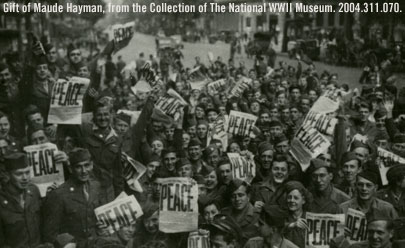
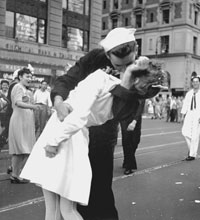 Following the surrender of Nazi Germany, Victory in Europe Day (V-E Day), on May 8, 1945, was marked by celebration among the Allies. However, for many the spirit of victory was subdued by the knowledge that the task of defeating Japan still remained.
Following the surrender of Nazi Germany, Victory in Europe Day (V-E Day), on May 8, 1945, was marked by celebration among the Allies. However, for many the spirit of victory was subdued by the knowledge that the task of defeating Japan still remained.
As the guns fell silent in Europe, a noose was being drawn around the Japanese home islands. Relentless American submarine attacks slowed the flow of food, oil, and other resources to a trickle, and American B-29s firebombed Japan’s urban and industrial bases to cinders. It was clear to most that Japan could not possibly hope to prevail.
But there were ominous signs that the Japanese military and government would continue to fanatically resist. The battle for Iwo Jima, concluded in late March 1945, had seen the Japanese attempt to make the fighting so costly that the Americans would lose their nerve at the prospect of invading the home islands. As the war in Europe ended, the battle on Okinawa raged with spectacular carnage. The scourge of kamikaze pilots plunging from the sky symbolized a martial spirit immune to reason or the acknowledgment of defeat, and appeared to be central to the identity of the Japanese people. After Okinawa fell to US forces on June 22, 1945, the battle for the Japanese home islands would begin. Japan had never surrendered to a foreign power in her history, and no Japanese military unit had surrendered during World War II.
American military planning went forward in two phases for Operation Downfall, the invasion of the home islands. The invasion of Kyushu would launch on November 1, 1945, and would be followed on March 1, 1946, by the invasion of Honshu and a drive on Tokyo. As the Japanese mobilized their military and civilian population to resist to the end, securing victory over Japan appeared to require a very long, bloody ordeal.
But instead, the most destructive war in history came to a shattering and rapid end. On August 6, 1945, the first atomic bomb was dropped over Hiroshima. Two days later, the Soviet Union fulfilled a pledge made at the Yalta Conference and declared war on Japan. Then, on August 9, a second atomic bomb was dropped over Nagasaki.
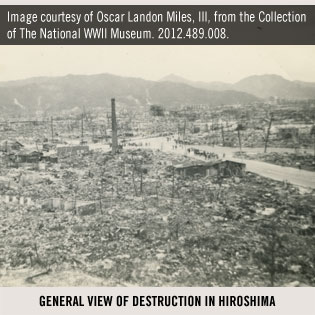
|
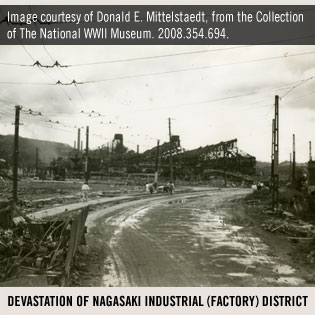
|
Factions within the Japanese government debated whether to accept the surrender terms put forward by the Allies after the Potsdam Conference, with one militant group attempting a coup d’etat against the government rather than accept surrender. But on August 14, 1945, the Japanese accepted surrender terms with no qualifications, and the following day Emperor Hirohito broadcast the news to the Japanese people—the first time ordinary Japanese had ever heard his voice.
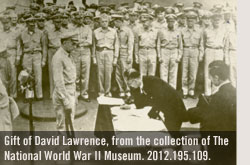 On August 14, 1945, President Harry Truman announced from the White House that the Japanese acceptance met Potsdam terms for unconditional surrender. Victory over Japan Day (V-J Day) would officially be celebrated on the day formal surrender documents were signed aboard the USS Missouri in Tokyo Bay: September 2, 1945.
On August 14, 1945, President Harry Truman announced from the White House that the Japanese acceptance met Potsdam terms for unconditional surrender. Victory over Japan Day (V-J Day) would officially be celebrated on the day formal surrender documents were signed aboard the USS Missouri in Tokyo Bay: September 2, 1945.
As soon as the news was announced, spontaneous celebrations erupted across the United States. The United Kingdom announced that its official V-J Day would be the next day, August 15, 1945, and that day saw Americans exuberantly joining in the joyous outpouring of emotion that greeted the end of the war.
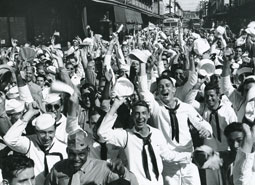 Newsreels showed a tremendous shower of paper and ticker tape in Times Square in New York City, with sailors climbing lampposts to unfurl American flags. An estimated two million people gathered in the vast crowds that jubilantly coursed through the city. In thousands of small towns like North Platte, Nebraska, similar scenes of celebration included fireworks, confetti, and impromptu parades down Main Street. On the west coast in San Francisco, parades celebrated that returning troops from the Pacific war would be welcomed back through the city.
Newsreels showed a tremendous shower of paper and ticker tape in Times Square in New York City, with sailors climbing lampposts to unfurl American flags. An estimated two million people gathered in the vast crowds that jubilantly coursed through the city. In thousands of small towns like North Platte, Nebraska, similar scenes of celebration included fireworks, confetti, and impromptu parades down Main Street. On the west coast in San Francisco, parades celebrated that returning troops from the Pacific war would be welcomed back through the city.
In Honolulu, marching bands, parades, ticker tape, and blowing papers filled the streets. In backyard celebrations, shirtless veterans drank celebratory toasts in the warm sunlight. Veterans and their girlfriends crowded into and on top of trucks and cars (some even riding on fenders), waved flags, and excitedly drove through city, relishing the moment that all Americans had hoped for ever since the war had begun at Pearl Harbor.
But as memorable as the arrival of victory over Japan was, the day was bittersweet for the many Americans whose loved ones would not be returning home. More than 400,000 Americans had given their lives so that this moment, the end of World War II, could be reached. Amidst the scenes of happiness and exultation, there was the ultimate recognition that the true meaning of the day was best represented by those who were not there to celebrate.
Dr. Keith W. Huxen is the Samuel Zemurray Stone Senior Director of Research and History for The National WWII Museum in New Orleans, Louisiana.
Artifacts:
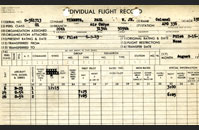
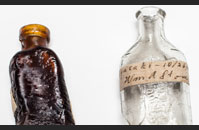
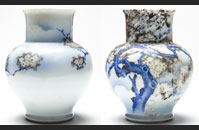
Flight Log |
Glass Bottles |
Vase |
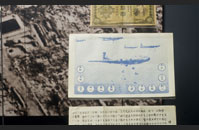
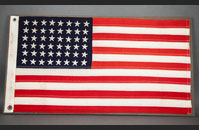
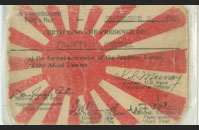
Leaflets |
US Flag |
Surrender Card |


